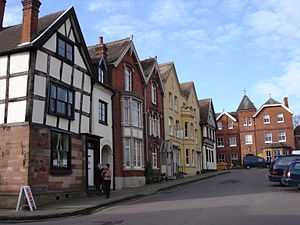Cathedral close

A cathedral close is an architectural term referring to the series of buildings that is appurtenant to a cathedral. These may include buildings housing diocesan offices, schools, free-standing chapels associated with the cathedral, and the houses of the bishop and other clergy associated with the cathedral. They sometimes, although not necessarily, are arranged in a sort of square around a courtyard forming a close. This map of the close at Salisbury Cathedral shows a typical arrangement. The English cathedral close however is distinctive with residence of non-clerical prominent persons, e.g. Judges` lodgings, the house once occupied by former Prime Minister Edward Heath at Salisbury. The presence of clergy children and the proximity of old - established Anglican schools adds to the distinctiveness.Until local government reform in the 1970s many cathedral closes functioned as separate administrative units, e. g. St. David's cathedral close (Pembs.)counted as a separate civil parish from that of the adjacent village-city for some fifty or so years after Disestablishment in Wales. Few continental cathedral areas possess all these characteristics; a physical resemblance exists with the former secularised residences of canons in cities such as Noyon (Oise, France), but which has no resident senior clergy. In other smaller cities (e.g. Trier, Limburg, Germany) property close to the cathedral is occupied by intense celibate clerical population, albeit with the day-time presence of non-clerical ancillary staff.
In literature
The Barchester novels (Chronicles of Barsetshire) of Anthony Trollope are set largely in the cathedral close of the fictional town of Barchester.